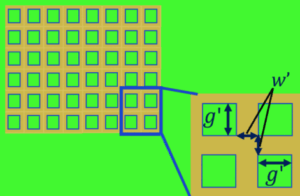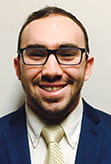Design and Characterization of Meshed Microstrip Transmission Lines
Zachary J. Silva ; Christopher R. Valenta ; Gregory D. Durgin
2019 IEEE MTT-S International Microwave Symposium (IMS)
Year: 2019 | Conference Paper | Publisher: IEEE
Abstract: Advancements in manufacturing techniques have enabled the ability to create micro-mesh conductive structures which have applications in a variety of electrical engineering technologies. This paper presents the theoretical analysis verified with simulated results and laboratory measurements of a 2.4 GHz micro-mesh transmission line over a solid ground plane. As expected, the reduction in conductive area results in a decrease in capacitance per unit length, and the mesh structure results in an increase in inductance per unit length leading to an overall increase in characteristic impedance and increase in electrical length. Results show that the mesh implementation to reduce the conductive material to 16% on a microstrip transmission line using FR-4 must get 44% wider than its solid metal counterpart to maintain 50 Ω impedance. Length must be similarly increased by a factor of 4% to maintain the same electrical length.



